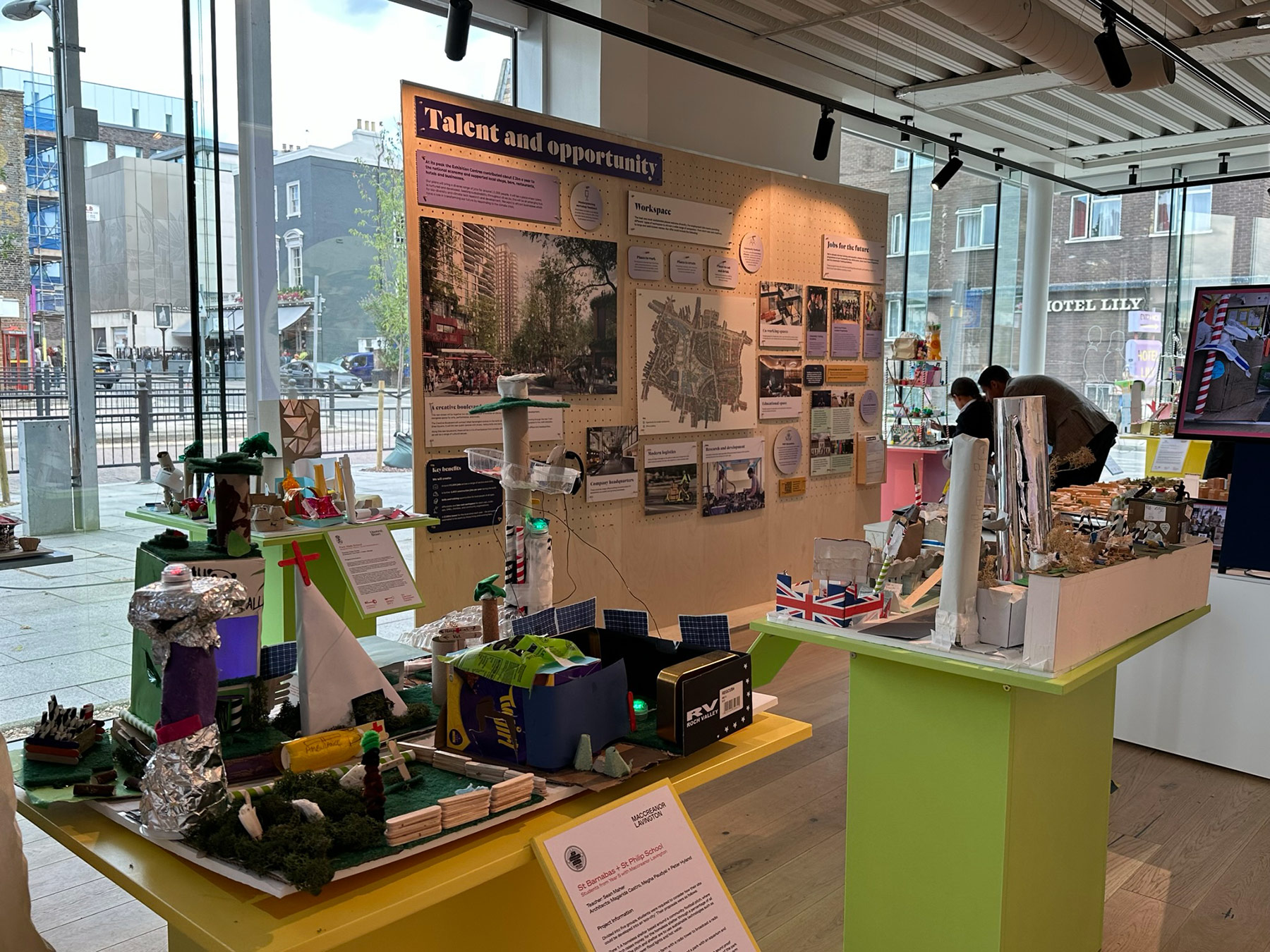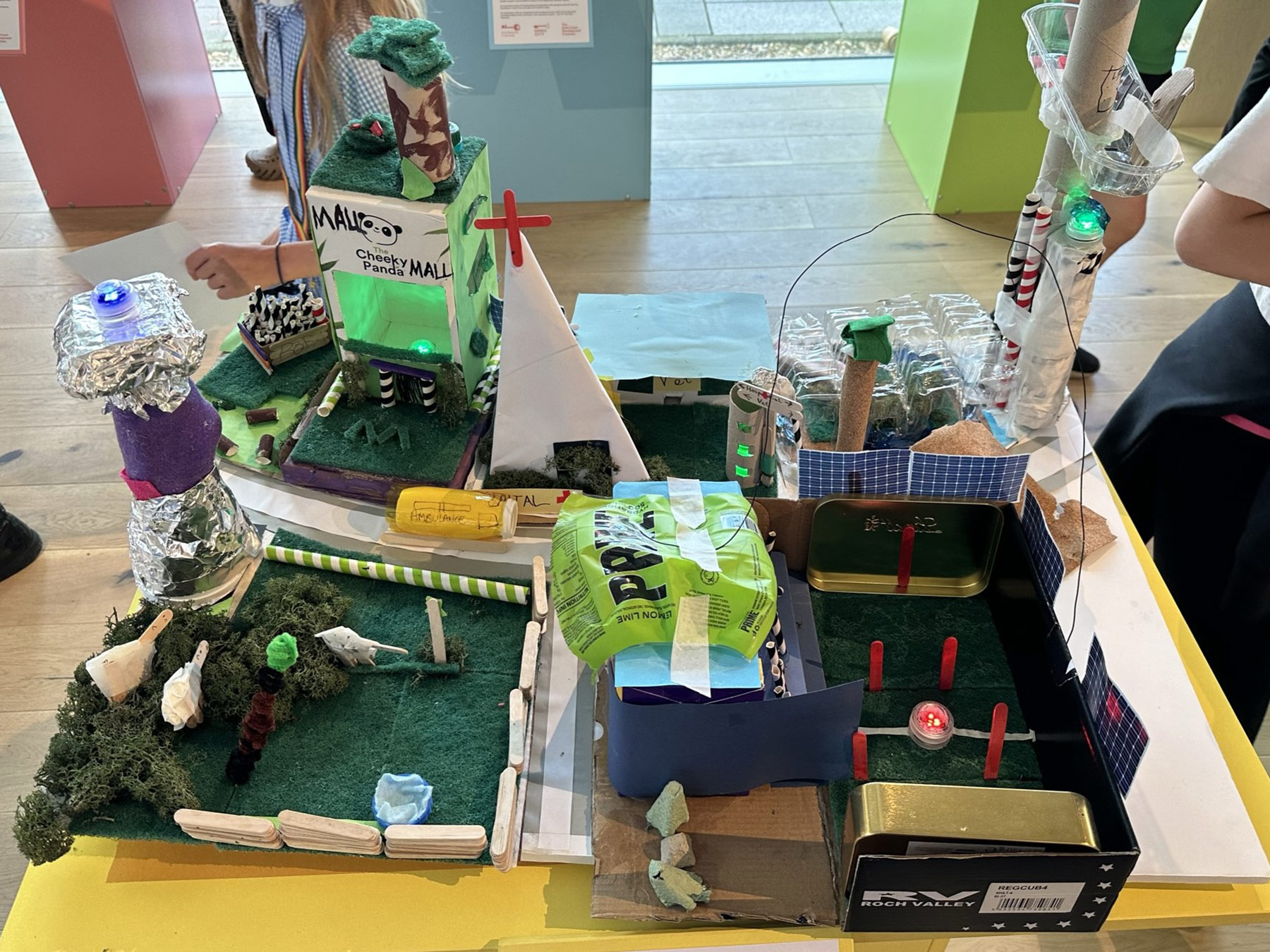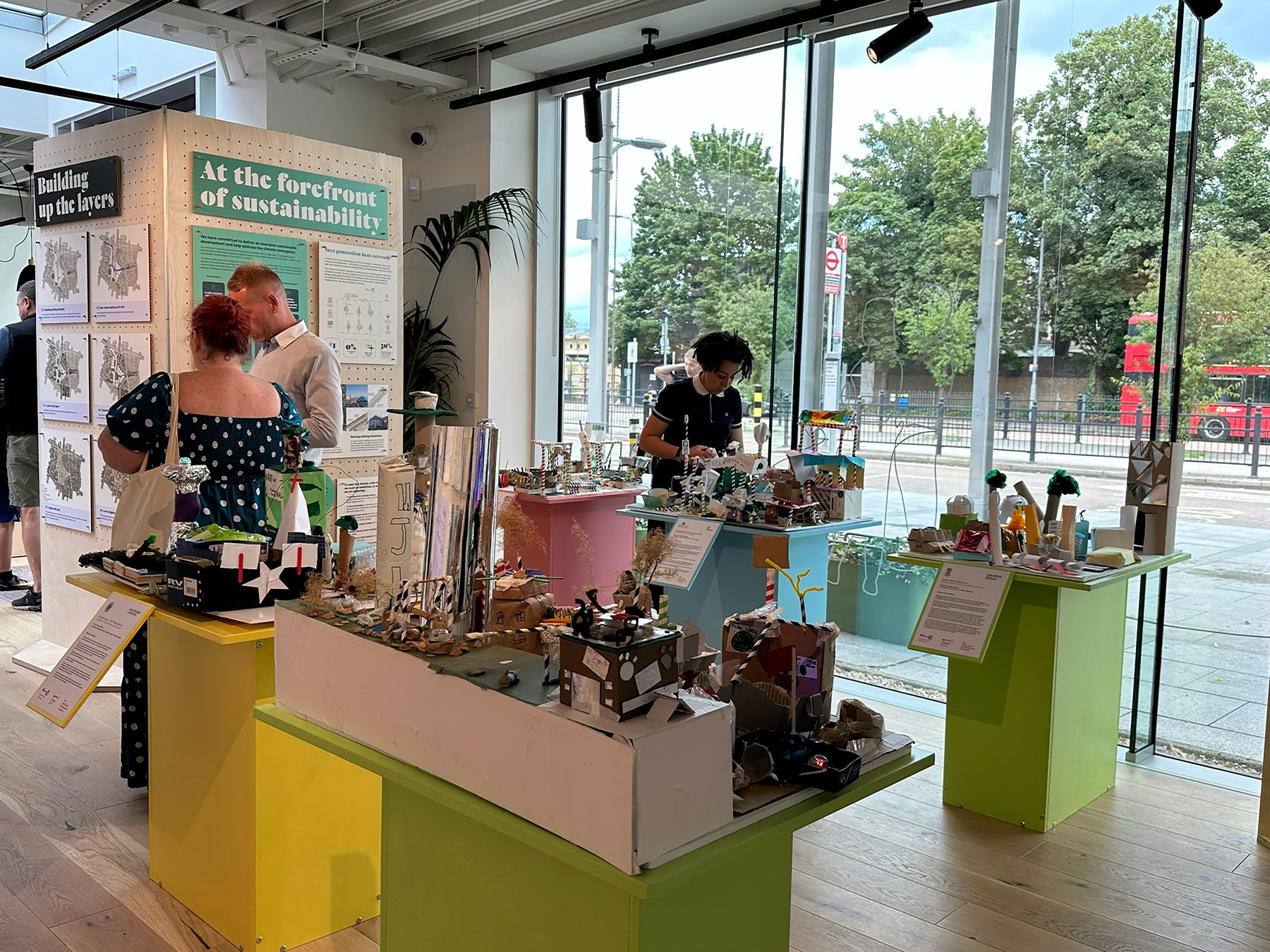We participate in Architecture in Schools
Maccreanor Lavington recently participated in Open City’s ‘Architecture in Schools’ programme, and as Peter Hyland discovered, the next generation are committed to sustainability and developing greener ways of living.
Open City is a charitable organisation at the forefront of ethical city-making since its foundation back in 1992. It runs several programmes across 40 countries from its famous Open House festival to the Architecture in Schools initiative, connecting people with their cities, and providing them with greater awareness and understanding of the built environment.
Architecture in Schools is designed to make pupils more aware of their local area through architecture and urban planning. And whilst it is run by Open City it relies on the voluntary participation of Architects who partner with a school to undertake a three-day programme. Maccreanor Lavington has been taking part for several years and this year, Megha, Margarida, and myself were the lucky participants.
The schools chosen were within London’s Earls Court region and our studio was assigned to the St Barnabas and St Philips Primary School. The subjects we chose to explore were the role of the architect and the ‘eco-friendly city’, aged 9 & 10, they certainly surprised us with their awareness of sustainability.
The pupils had recently been taught about an “eco-school” and were bursting with ideas about recycling, solar panels, wind energy, and parks as important components for an ‘eco city’. Their thinking went even beyond this with one child mentioning geothermal, another a wellness park with soundproof glazing, the other an urban farm and the next child was able to join up the dots and suggest that a veterinary clinic is required for the farm animals and pets in their area. Even if one child is calling the geothermal station a boiler you still feel that they understand the principle. As a result it was our St Barnabas team who collected the sustainability award at the end of the school workshops.
The other striking and warming observation was the awareness of those less fortunate in society. Helping the homeless was raised a few times as an important part of an eco-city. One group proposed a football pitch and homeless shelter being built together using the revenue from the football pitch to help fund the running of the shelter.
It was encouraging to see the next generation of designers, architects, and urbanists bringing their knowledge of sustainability and ideas together to form their vision of an ‘eco-city’. They certainly comprehend that our cities need to stimulate economic growth, reduce poverty, utilise sustainable technologies, and improve health and wellbeing. This left us all with a stark reminder of our responsibility as designers to pave the way and set an example for the next generation.
Peter Hyland is an Architect with Maccreanor Lavington


